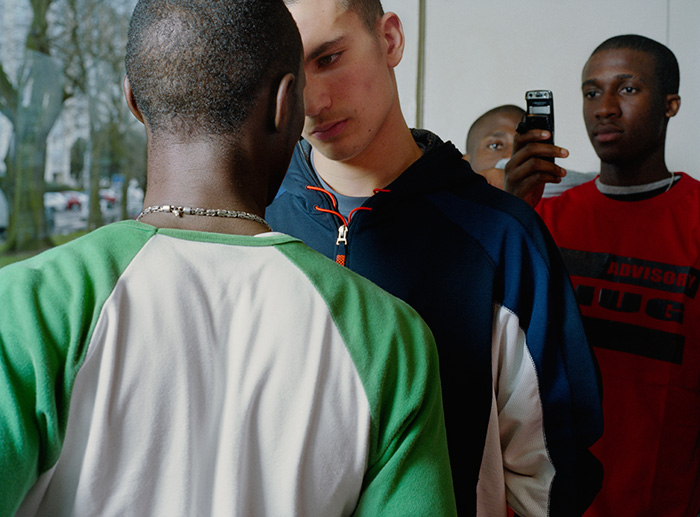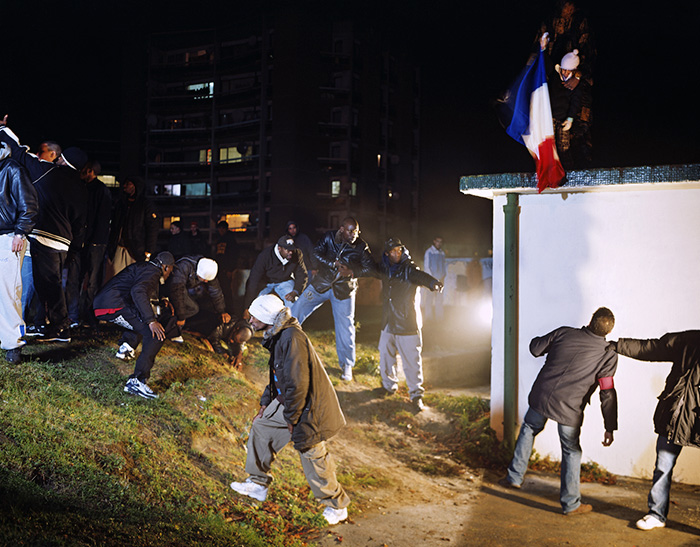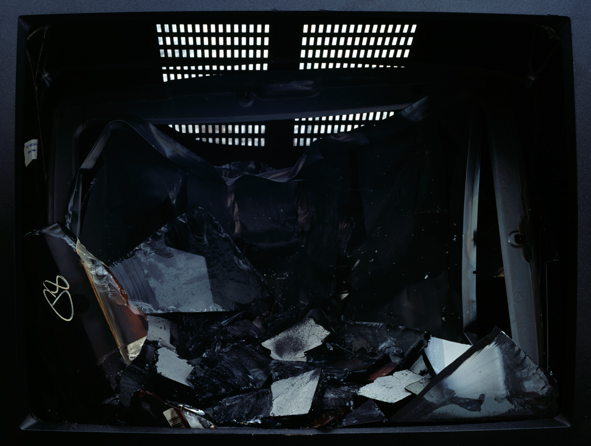
Work is shown in AGO, Toronto, Canada. Till February 8, 2015.
From the series Périphérique, 2005-2009.
About:
Born in 1978, Mohamed Bourouissa works and lives in Paris, France. His work has been presented in a number of solo and group exhibitions at the Centre Pompidou, the Palais de Tokyo, the Musée d’Art Moderne de la Ville de Paris, the Palazzo Grassi – François Pinault Foundation in Venice, the MAXXI in Rome, the New Museum of Contemporary Art in New York, the Philadelphia Museum of Art, the SCAD of Atlanta, the Finnish Museum of Photography of Helsinki, the Muzeum Sztuki in Lodz, the Fotomuseum in Rotterdam, the Nikolaj Kunsthal of Copenhagen, the KW Institute for Contemporary Art of Berlin, as well as during the Berlin Biennale and the 2011 International Biennale of Contemporary Art in Venice.
 From the series Périphérique, 2005-2009.
From the series Périphérique, 2005-2009.
About:
“I am always asked about Algeria, about being Algerian,” says the elegant, slender, 35-year-old artist, his jet black beard neatly trimmed. “But although I was born in Algeria to Muslim Algerian parents, I grew up in the suburbs of Paris, and I think of myself as French.” And Bourouissa’s French credentials are impressive. He received his undergraduate degree in visual arts at the Université Paris 1 Panthéon-Sorbonne in 2004 and also received a diploma from the École nationale supérieure des Arts Décoratifs with a specialization in photography. He then received additional training at the acclaimed, multimedia-oriented Le Fresnoy, Studio National des Arts Contemporains. And from early in his career, Bourouissa has been in demand internationally, having exhibited his work at places like the Centre Pompidou in Paris and the New Museum in New York.
 From the series Périphérique, 2005-2009.
From the series Périphérique, 2005-2009.
Bourouissa is indeed a French rather than an Algerian artist, and he reflects the relatively new, multicultural face of what it means to be French in the 21st century. Not so long ago, most of us in North America instinctively associated French art with figures like Jean-Léon Gérôme, Théodore Géricault, Eugène Delacroix, Édouard Manet and Henri Matisse, and France with the grace, charm and beauty of the narrow streets and rambling boulevards of the centre of Paris. But in October of 2005, riots broke out in those Parisian suburbs with largely African and North African residents, triggered by three boys being chased by police in Clichy-sous-Bois. They fled into a power station and were electrocuted (two of them died), blacking out the neighborhood. The riots went on for weeks, and spread across Paris’s suburbs and then across France. Suddenly, Paris became associated less with the cafés of Montparnasse or the lovely 6th arrondissement and more with burning police cars, clouds of tear gas and angry, rock-throwing youths in the city’s grungy, poor, congested Périphérique.
 Agnes, 2013.
Agnes, 2013.
It should come as no surprise that Bourouissa’s first landmark series of photographs is entitled Périphérique (2005–08), an extended study of the complicated, and often volatile, dynamics of the neighbourhoods in which he grew up. While Bourouissa’s finely wrought colour photography captures everyday moments (“What I am after is that fleeting tenth of a second when the tension is at its most extreme,” he has said), he is by no means a documentary street photographer in the tradition of Henri Cartier-Bresson or Robert Frank: Bourouissa’s immediate ancestors are photographers like Jeff Wall and Philip-Lorca diCorcia, as well as the great painters of history like Delacroix, Géricault, Francisco Goya and Manet. Like Wall’s images, Bourouissa’s scenes are carefully staged and cinematically lit, but whereas Wall’s work is self-consciously unnatural, spacious and panoramic, Bourouissa’s is dense, intimate, and at times explosive. “I start with the conceptual dimension and see how that is related to the form,” he says, “but I only photograph things that I have a connection with—my work is often very personal.”
 Screen, 2010.
Screen, 2010.
(Quotes from article of Daniel Baird in the Fall edition of Canadian Art, 2013)
Courtesy: Kamel Mennour Paris.
